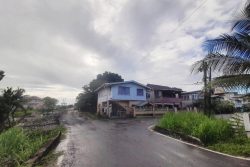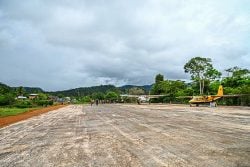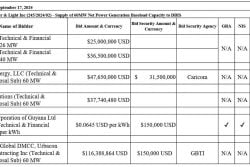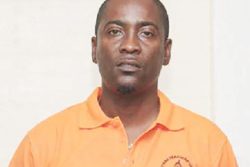Dear Editor,
It is amazing the extent to which some members of the Indo Caribbean Diaspora Network will go to misrepresent the truth. In the Stabroek News article of 13 August 2024, Baytoram Ramharack stated the “The scheme to have British Guiana become an Indian Colony was conjectural”. How can the British Guiana Colonisation Scheme in which Guyana was offered to India as a Colony in 1919 be conjectural? On December 5, 1909, Guyana was offered to India as a Colony regardless of the fact that 473,000 Africans had given their lives to indigenize Guyana during slavery and regardless of the fact that Indentured Indians came to Guyana more than 200 years after Africans were enslaved here and regardless of the fact Indentured Indians had only been in Guyana for 71 years in 2009, fully paid, with their culture intact etc. The British Guiana Colonisation Scheme was finally rejected by Mahatma Gandhi in 1929 after 10 years of intense lobbying and multiple visits to India and London during a decade of advocacy by prominent East Indians such as J.A Luckhoo, Dr. William Hewley Wharton, Peter Ruhoman, and C.R Jacob.
The British Guina Colonisation Scheme is in the National Archives. Among the documents are clear plans. For example, “The British Guiana Coloni-sation Scheme initially targeted many areas, namely: (1) 6,300 acres in the Pomeroon behind Hampton Court estate,(2) 8,000 acres on Hog Island on the steamer route to the East and West Essequibo. (3) 2,108 acres from Philadelphia to Bonasika Creek adjoining the Boerasirir Creek and Warimia Conservancy, (4) 7,500 acres on or adjoining the Canals Polder, (5) 32,580 acres on the Mahaica, (6) 14,854 acres on the West Coast and Abary, (7) 7,450 acres on the Corentyne Coast. In addition, there were the lands of the N.W. District which required no empoldering over at least 100,000 acres”.
I present the truth written by a credible source from Guyana who lives in the United Kingdom and who is a historian. Professor Clem Seecharan, Emeritus Professor of History, London Metropoli-tan University, who in the 2014 Republic of Guyana Distinguished Lecture entitled “The El Dorado Complex in the shaping of Indo-Guyanese: a revisionist perspective”, said in the presence of several Ministers of the then PPP Government at the Umana Yana: “Having received no compensation for their enslavement over more than two centuries, freed Africans experienced the rapid erosion of their embryonic bargaining advantage of the 1840s, with the accelerated importation of indentured labourers throughout the latter half of the 19th century. By the 1890s they saw Indians as the greatest threat to their future in the colony – as the numerically and economically ascendant group, whom they regarded as pampered by planters, while they languished in penury as a result: the alien coolie was here to stay, with potential to dominate. This was exacerbated by fears that prominent Indians, such as J.A. Luckhoo and Dr William Hewley Wharton, were committed to creating an Indian Colony, with the possible renewal of immigration from India, after the end of indentureship in 1920. African apprehensions were sustained in the 1930s, when prominent Indians, such as Peter Ruhomon and C.R. Jacob, advocated building of a “greater India” in Guyana. This imbedded a resilient fear among African Guyanese that they would lose everything to the Indian juggernaut. Moreover, the notion that British Guiana is an El Dorado, with stupendous resources, has fed continual apprehension between Africans and Indians that whoever inherits the kingdom is on the royal road to a Golden Age. This bred fantasy into the psyche of its peoples, with a penchant for grandiloquence: its rivers big enough to swallow Barbados at their mouths; these rivers so long they must run to the moon; the mountains in the interior (totally inaccessible) must be pregnant with gold, diamonds – wealth of unimaginable vastness. This promise of El Dorado is alive today, with the prospect of an impending oil boom and massive mineral wealth awaiting exploration in the interior”. I wish Guyanese and others would visit the Guyana Archives and read the numerous pages of the British Guiana Colonisation Scheme for themselves. I have dedicated an entire volume of my Sovereignty Series books to this issue.
Regarding my statement at the Emancipation Symposium, I stand by my estimation that 97% of the economy is now in the hands of members and supporters of the current PPPC government. Nigel Hinds, a reputable accountant, in his March 2, 2021, article in the Stabroek News “The administration must govern openly to reduce inequalities within and between groups of Guyanese”, wrote the following: “The PNC (APNU-AFC) is the only group in Guyana that can currently organize, mobilize and defend their supporters against the ongoing and building onslaught of prosecutions, persecutions and race-prejudiced discrimination. We have come to the breaking point in this country or a point of inflection, where racial issues that have been with us for decades need to be addressed frontally. I am dismayed to see this new administration act with such extreme economic prejudice, especially considering that over 85% of property and capital in Guyana is controlled or flow to non-PNC supporters”.
He continued “The behaviour of the PPP since regaining power in August of 2020, with the goodwill of the global community is a case in point. Their continuing assault on the economic well-being of PNC supporters actually justifies the rigging of elections by Burnham and Hoyte between 1964 and 1992.” Nigel Hinds further stated in that article “The onslaught by the PPP decision makers extends to private sector contracts, property ownership, access to capital and use of the law to frustrate and diminish opportunities for the economic advancement of PNC supporters. The small parties have gone into their shells, speechless against the discrimination rendered against PNC supporters, as have most of the mainstream media commentators, who in the past have been critical of both the PPP and the PNC. These silent commentators must know that they are consenting enablers by their silence. Access to contracts and insider treatment for public commentators must not take precedence over exposing overt and covert racism. Can you imagine Walter Rodney breaching his code of ethics for a job or for fear of losing a contract?” These are not my words Baytoram Ramharack. Quotes above are from Professor Emeritus Clem Seecharan and Nigel Hinds.
What I do know is Guyana’s GDP has mover for US$6000 to US 20,000 over the last 4 years. During that time, the PPP/C’s National Budgets were G$383B (2021); G$553B (2022), G$782B (2023) and G$1145B. These numbers are without the multiple extra Sovereign Wealth Fund unilateral drawdowns for a variety of things. Normally, between 70-80% of the budget is procurement. Now Baytoram, Ravi and others, can you name a single significant contract any African Guyanese has won? For example, I have observed many billion-dollar road contracts going to folks who have never built a pavement in their lives, but the awarding of the contract to them gives them the power to go hire folks who have built roads. This is corruption and often nepotism. Is it 95 % or 96% or 97% or 98%. If this continues for another 5 years, will it be 99%? Then the British Guina Colonisation Scheme would be fully operationalized. N’est Pas? The British Guina Colonisation Scheme is a historical fact. It was pursued with triumphant vigor for over a decade.
Sincerely,
Eric Phillips
1990-91 White House fellow





